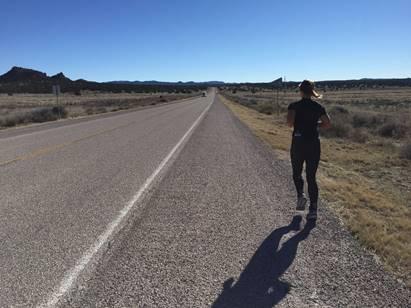
A study of how much energy athletes expend as they undertake some of the world’s longest and most grueling sporting events has found that there is an absolute ceiling to how many calories we can burn, no matter how much we eat. The research, reported in Science Advances, showed that whatever the physical activity, and whether it lasted for days, weeks, or months, humans can only burn calories at about 2.5 times their resting metabolic rate. Beyond this threshold, the body starts to break down its own tissues to make up for calorific deficit.
“This defines the realm of what’s possible for humans,” commented research co-lead Herman Pontzer, PhD, an associate professor of evolutionary anthropology at Duke University. The investigators point to the digestive tract as the limiting factor in energy burn, and say the same physiological limits that impact on endurance athletes might also constrain aspects of reproduction, such as pregnancy duration, or how large babies might grow in utero. Pontzer and colleagues reported their findings in Science Advances, in a paper titled, “Extreme events reveal an alimentary limit on sustained maximal energy expenditure.”
There’s considerable scientific interest in studying the physiological limits on energy expenditure—which is often expressed as a multiple of basal metabolic rate (BMR), and known as “metabolic scope,”—to help what the maximum sustained metabolic scope (SusMS) is for humans and other species, the authors explained. “The limits on maximum sustained energy expenditure are unclear but are of interest because they constrain reproduction, thermoregulation, and physical activity. ”
To investigate this in the context of human endurance the researchers, headed by Pontzer and John Speakman, PhD, a professor at the University of Aberdeen and the Chinese Academy of Sciences, measured how many calories were burned by athletes in the 2015 Race Across the USA (RAUSA). Participants in the 3,000-mile race, which stretches from California to Washington, D.C., run six marathons a week for 14–20 weeks. The team then analyzed the data they derived from the RAUSA athletes in parallel with existing data available from other endurance or energy-intensive activities, including triathlons, the Tour de France, arctic trekking, and pregnancy, with a view to quantifying the relationship between duration of activity and maximum measured metabolic scope.
While results demonstrated a wide variation in metabolic rates, dependent on the length of the endurance event, they also showed that prolonged high metabolic rates were accompanied by reduced total energy expenditure. The investigators had measured total energy expenditure (TEE) and resting metabolic rate (RMR) in the RAUSA athletes at three time-points: before the start of the race; then during the first week (Week 1); and again during the final week (Week 20). They discovered that while the participants’ resting metabolic rate remained unchanged over the course of the race, their total energy expenditure decreased between Week 1 and Week 20, resulting in a decreased metabolic scope.
By the end of the race, the athletes were burning 600 fewer calories per day than expected based on their mileage. This suggested that the body can effectively shift down a metabolic gear to help sustain such high levels of endurance activity. “Whatever the mechanisms, the reduction in TEE and metabolic scope may have been crucial in enabling them to complete the run,” the investigators noted.
The resulting L-shaped graph of metabolic scope over time illustrated how athletes’ energy expenditure started out high, but then dropped and flattened out at 2.5 times their basal metabolic rate. “It’s a great example of constrained energy expenditure, where the body is limited in its ability to maintain extremely high levels of energy expenditure for an extended period of time,” said co-author Caitlin Thurber, PhD. “You can sprint for 100 meters, but you can jog for miles, right? That’s also true here,” Pontzer said.
The same shaped graph was obtained for all of the endurance events, whether athletes were sled-hauling in freezing Antarctic conditions, or cycling up mountains in the summer Tour de France. This consistency under very different environmental conditions challenges one previously mooted theory that endurance is linked with the ability to regulate body temperature.
Interestingly, the maximum sustainable energy expenditure demonstrated by endurance athletes was only slightly higher than metabolic rates sustained by pregnant and lactating women, which peak at about 2.2 times BMR, the authors noted. This indicates that the same physiological limits that put a top limit on ultimate endurance capabilities also underpin aspects of reproduction, such as fetal growth in utero.
The authors speculate, from their endurance event data and results from overfeeding studies, that the limiting factor on calorie burning is the digestive system’s ability to take up and process nutrients. “The agreement of weight change data from overfeeding studies with those from endurance studies suggests that a common alimentary limit to energy uptake constrains a broad range of activity,” they wrote.
“Whatever the physiological mechanism, the strong relationship between SusMS and duration reveals a common underlying framework uniting the full range of protracted endurance endeavors among humans, from exploration, to sport, and reproduction,” they concluded. “The relationship between SusMS and duration flattens out at ~2.5x BMR, suggesting a metabolic ceiling for habitual metabolic scope (often termed ‘physical activity level’) in humans.”
As far as the researchers are aware, no one has ever sustained levels beyond this limit. “So I guess it’s a challenge to elite endurance athletes,” Pontzer commented. “Science works when you’re proven wrong. Maybe someone will break through that ceiling some day and show us what we’re missing.”


